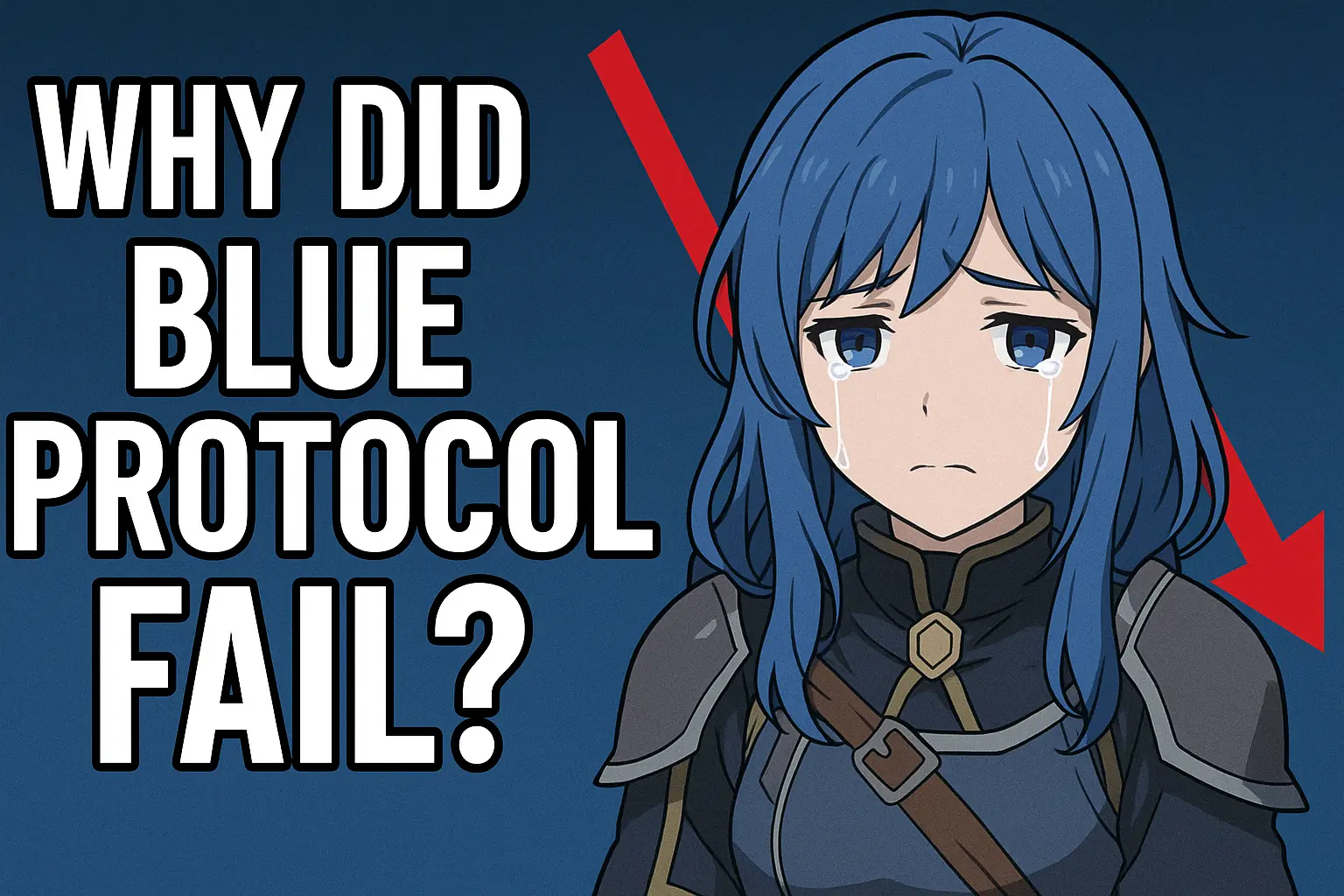Blue Protocol, Bandai Namco’s anime-inspired MMORPG, had massive potential right from the start. With a captivating world, action-packed combat, and the promise of an immersive experience, it caught the attention of players worldwide. Yet, despite the excitement, Blue Protocol has struggled to retain players and build a lasting community. Why did this game fail to live up to its expectations? In this blog, we’ll explore the key reasons behind Blue Protocol’s failure, looking at everything from technical issues to poor monetization and cultural clashes. Let’s dive in.
The Staggered Release: A Key Mistake
Why did Blue Protocol fail? When the game first launched, the excitement was palpable. Its anime visuals and dynamic combat system generated a lot of buzz. However, the release strategy left a lot to be desired. Launching first in Japan and making Western audiences wait led to a fragmented community. By the time Blue Protocol became available in the West, much of the initial hype had already faded.
- Simultaneous Global Launch: The MMORPG market is fiercely competitive, and players expect a simultaneous global release to keep excitement high. The decision to launch Blue Protocol first in Japan was a major error, as it diluted the excitement for the global audience. Waiting weeks for a release is an engagement killer, especially in a fast-paced gaming market.
Censorship or Gameplay? The Real Problem
There’s been a lot of buzz around censorship in Blue Protocol, especially with Amazon Games handling the Western version. Some players believed that content changes for the Western market were the main reason for the game’s failure. However, the real issue was much deeper: Blue Protocol lacked innovation, and its gameplay design didn’t meet expectations.
- Lack of Innovation: While the game’s visuals were stunning, its combat system and gameplay loop felt repetitive and uninspired. MMORPGs require constant innovation and engaging progression systems to maintain player interest. Unfortunately, Blue Protocol failed to provide fresh and exciting mechanics, which contributed to its downfall.
Monetization Gone Wrong: Pay-to-Win Concerns
Why did Blue Protocol fail? One major reason lies in its monetization strategy. While monetization is a crucial aspect of any free-to-play MMORPG, in Blue Protocol’s case, it backfired. Players voiced concerns over the game’s gacha mechanics, expensive cosmetic items, and season pass fatigue. These systems felt predatory to many, leaving players with the impression that they had to pay to win.
- Predatory Monetization: Aggressive monetization strategies like locked content behind paywalls or relying heavily on gacha mechanics can turn players off, especially when the game fails to offer enough meaningful in-game rewards. Blue Protocol’s failure to create a fair, rewarding progression system made it feel more like a cash grab than a player-focused game.
Technical Issues: A Game’s Worst Enemy
The technical performance of Blue Protocol was another area where the game faltered. At launch, players encountered server issues, long queue times, and poor optimization, especially on lower-end PCs. These technical difficulties created a frustrating experience for players, leading many to abandon the game early.
- Poor Optimization: In today’s world of online gaming, performance stability is critical. Players expect smooth, lag-free gameplay. Unfortunately, Blue Protocol’s technical flaws left a negative impression and hurt its player retention.
Cultural Clash: The Japan-West Divide
Blue Protocol was designed primarily for a Japanese audience, and its design reflected that. However, when it came to Western players, the game didn’t fully resonate. Cultural differences in game design led to confusion and dissatisfaction, especially with character designs and gender representation.
- Cultural Sensitivity: The visual style and some of the game’s aesthetic choices weren’t well received in the West. Characters that were accepted in Japan were criticized for their youthful appearance in Western markets, where standards of representation are different. Blue Protocol’s failure to adapt its content for a global audience contributed to the disconnect. Follow this reddit community for more updates and news. You can find the community link Here.
Lack of Endgame Content: The Core Issue
Another significant problem was the lack of endgame content. After completing the main story, many players found themselves with little to do. There were no high-level raids, PvP events, or co-op challenges to keep players engaged.
- Endgame Engagement: MMORPGs thrive on endgame content, which is what keeps players coming back after the main story is finished. Blue Protocol failed to deliver a compelling endgame, which is one of the main reasons why players left.
The Competition: Throne and Liberty and Other MMORPGs
As Blue Protocol struggled, other MMORPGs like Throne and Liberty and Final Fantasy XIV picked up the slack. These games provided smoother experiences, better progression systems, and stronger endgame content that Blue Protocol failed to deliver.
- Competitive Landscape: The MMORPG market is extremely competitive, and Blue Protocol couldn’t stand out. With successful games like Lost Ark already well-established, Blue Protocol failed to offer anything new or exciting enough to pull players away from other titles.
The Unrealized Potential: What Could Have Been
Blue Protocol had all the ingredients to be a standout title. Its anime-inspired visuals, rich world-building, and action combat were compelling. However, the game failed to evolve beyond its initial offering. It lacked the content updates, community engagement, and innovative mechanics needed to keep players coming back.
- Missed Opportunities: If the game had focused on dynamic content and player-driven progression, it could have turned things around. Games like Final Fantasy XIV and Guild Wars 2 show how continuous updates and community involvement can create a thriving MMORPG.
Conclusion: A Cautionary Tale for Developers
Why did Blue Protocol fail? The answer is multifaceted. The game’s uneven release, poor technical performance, aggressive monetization, and lack of innovation all contributed to its early demise. Despite its potential, Blue Protocol’s inability to adapt to the modern MMORPG landscape led to its failure.
For MMORPG developers, Blue Protocol’s failure serves as a cautionary tale. It’s not enough to rely on stunning visuals or a large fanbase. Gameplay innovation, player-first design, and technical polish are essential to succeed in the MMORPG space.
FAQs
Why didn’t Blue Protocol succeed in the West?
The game’s delayed global release, technical issues, and lack of content led to dissatisfaction among Western players. Additionally, the cultural mismatch in design choices made it difficult for the game to resonate.
What caused Blue Protocol’s technical issues?
Server crashes, optimization problems, and poor performance on lower-end PCs caused many players to abandon the game early. These issues were never fully resolved, contributing to the game’s failure.
Can Blue Protocol recover?
While the game has potential, significant updates are needed to fix its technical issues, improve its gameplay, and offer more engaging content. However, recovering the lost player base will be difficult without a major overhaul.
ReadMore: Capital One Data Breach Settlement: How to Claim Your Share of $190 Million




